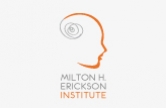INTERVENING ON ASTHMA AND ALLERGIES
Asthma and allergies are very common conditions in our society. Their negative impact on the patients’ quality of life is very strong because of the physical symptoms they cause: airway obstruction, hypersensitivity and inflammatory processes. To this day, standard treatments consist in pharmacologic therapies that mostly aim to reduce the inflammatory component of the process in a non-definitive way.
The scientific literature of the last 50 years [1] describes hypnosis as an effective technique to treat asthma. Considering all cited studies, results show an improvement of subjective symptoms assessed by collecting information from the patients’ clinical diaries and by monitoring the frequency of use of pharmacologic treatments.
Another aspect that is often overlooked in managing asthma and allergies is the psychological and subjective component of such conditions. When symptoms are interpreted without considering their psychological correlates, such as anxiety, past experiences and the patients’ cognitive abilities, therapies cannot lead to the optimal degree of healing. In a recent case report [2], the importance of subjective factors in the management of asthma was underlined in the description of a case involving a child with severe asthmatic symptomatology. After 2 sessions of 45 minutes each, conducted by a pediatrician trained in hypnosis, in which the patient was informed about hypnosis, the patient regularly applied the relaxation techniques she learned obtaining an important subjective result: anxiety, a factor that is often associated to asthma, was reduced, respiration became more regular and the frequency of hyperventilation attacks decreased.
Data are less clear [1] regarding the improvement of objective symptoms, such as bronchodilation and respiratory flow. This result is influenced by at least two classes of reasons: on the one hand the studies in this field, that are not recent anymore, have some methodological flaws, such as the absence of a control group (an experimental group that does not receive any kind of treatment used to observe the normal course of the condition) or of a placebo group (an experimental group whose participants believe of receiving active treatment while an aspecific intervention is administered). On the other hand, the studies selected patients with different criteria, making a precise control of objective symptoms impossible.
In the field of allergies instead, procedures to deliberately provoke an allergic reaction (such procedures are based on the subcutaneous application of histamine, a substance causes local allergic reactions, or on the administration of tubercoline, a substance that causes urticant reactions) have been used in order to accurately and objectively assess the effect of hypnosis [3]. For instance, it was demonstrated that highly suggestible subjects, after a hypnotic induction designed to contain allergic reactions, reported a significant reduction of the erythema compared to a control group who underwent the same histaminergic test without hypnotic interventions. Furthermore, opposed suggestions aiming to increase or reduce urticant reactions, administered respectively to one arm and to the other, lead to significant and objective differences in the size of the erythema and in the hardening of the inflamed area.
These results demonstrate how the use of hypnosis in the treatment of asthma and allergies is an effective solution that has to be seriously taken into account.
[1] Hackman RM, Stern JS, Gershwin ME. Hypnosis and Asthma: a critical review. Journal of Asthma, 2000, 37, 1-15.
[2] Anbar RD. Self-hypnosis for anxiety associated with severe asthma: a case report. BMC Pediatrics, 2003, 3, 7.
[3] Zachariae R, Bjerring P, Arendt-Nielsen L. Modulation of Type I immediate and Type IV delayed immunoreactivity using direct suggestion and guided imagery during hypnosis. Allergy, 1989, 8, 537-42.

